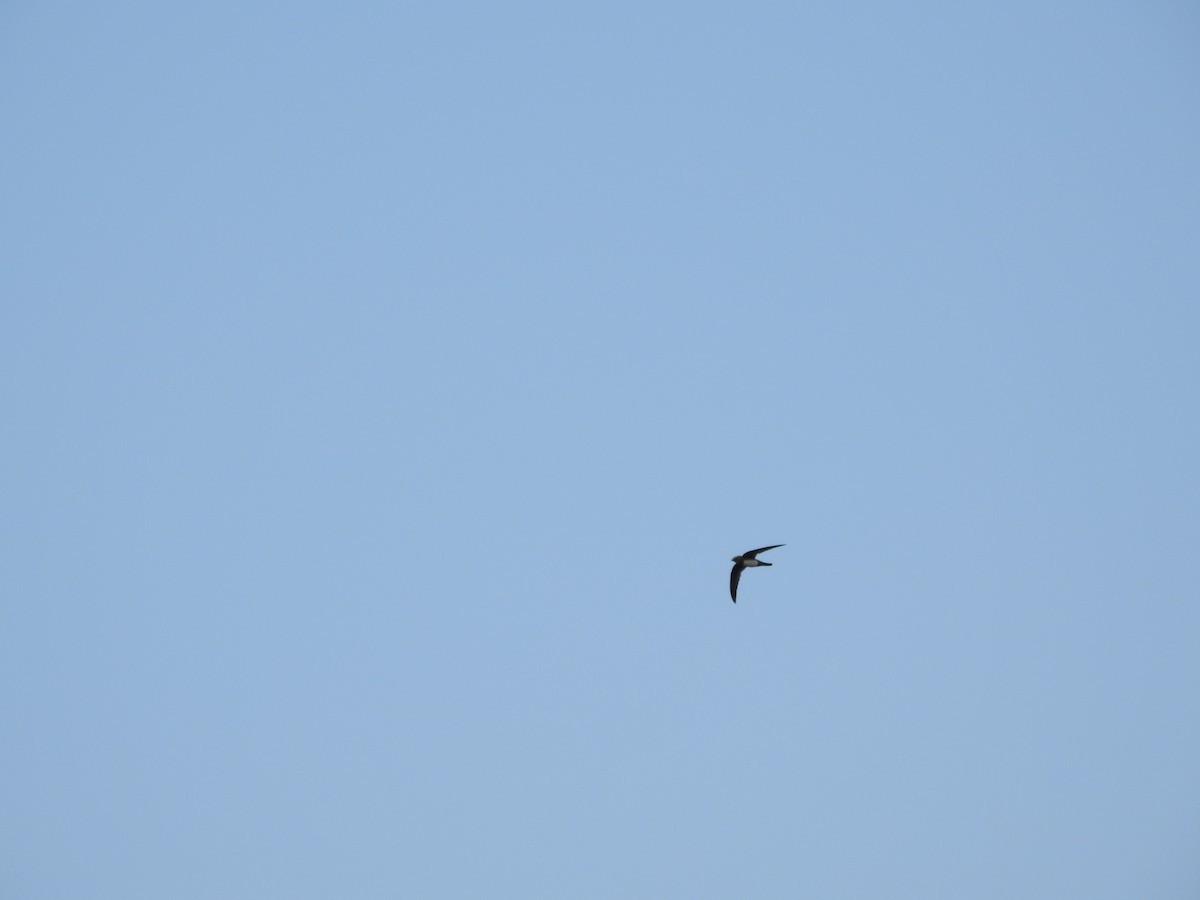Alpine Swift
A species of Typical Swifts Scientific name : Tachymarptis melba Genus : Typical Swifts
Alpine Swift, A species of Typical Swifts
Botanical name: Tachymarptis melba
Genus: Typical Swifts
Content
Description General Info
 Photo By Ashwin Viswanathan
Photo By Ashwin Viswanathan Description
The bird is superficially similar to a large barn swallow or house martin. It is, however, completely unrelated to those passerine species, since swifts are in the order Apodiformes. The resemblances between the groups are due to convergent evolution, reflecting similar life styles. Swifts have very short legs which they use only for clinging to vertical surfaces. The scientific name Apodidae comes from the Ancient Greek απους, apous, meaning "without feet". They never settle voluntarily on the ground. Alpine swifts breed in mountains from southern Europe to the Himalaya. Like common swifts, they are strongly migratory, and winter much further south in southern Africa. They wander widely on migration, and are regularly seen in much of southern Europe, Salford and Asia. The species seems to have been much more widespread during the last ice age, with a large colony breeding, for example in the Late Pleistocene Cave No 16, Bulgaria, around 18,000–40,000 years ago. The same situation has been found for Komarowa Cave near Częstochowa, Poland during a period about 20,000–40,000 years ago. These apodiformes build their nests in colonies in a suitable cliff hole or cave, laying two or three eggs. Swifts will return to the same sites year after year, rebuilding their nests when necessary, and pairing for life. Young swifts in the nest can drop their body temperature and become torpid if bad weather prevents their parents from catching insects nearby. They have adapted well to urban conditions, frequently nesting in old buildings in towns around the Mediterranean, where large, low-flying flocks are a familiar feature in summer. Alpine swifts have a short forked tail and very long swept-back wings that resemble a crescent or a boomerang but may (as in the image) be held stretched straight out. Their flight is slower and more powerful than that of their smaller relatives, with a call that is a drawn-out twittering (listen at right). Alpine swifts are readily distinguished from the common swifts by their larger size and their white belly and throat. They are around twice as big as most other swifts in their range, about 20 to 23 cm (7.9 to 9.1 in) in length, with a wingspan of 57 cm (22 in) and a weight of around 100 g (3.5 oz). By comparison, the common swift has a wingspan of around 42 cm (17 in). They're largely dark brown in colour with a dark neck band that separates the white throat from the white belly. Juveniles are similar to adults, but their feathers are pale edged. 
Size
22 cm
Colors
Brown
Black
Gray
White
Life Expectancy
26 years
Nest Placement
Cliff
Feeding Habits
Alpine Swift predominantly feeds on flying insects mid-air. They demonstrate aerial foraging, even drinking while flying. Unique adaptations allow alpine Swift to snatch prey with precision.
Habitat
Alpine Swift dwell predominantly in mountainous regions, from temperate to Mediterranean zones, and extend into sub-desert steppe and equatorial highlands. This species adapts to a variety of environments, from lowlands to high altitudes. They breed on vertical cliffs or within cave recesses, mostly below 1500 meters, but occasionally at elevations up to 2200–2300 meters, even exceeding 4000 meters in some African highlands. In migration, they cover expansive areas, including southern Africa, and exhibit strong seasonality in their movement patterns.
Dite type
Insectivorous
General Info
Feeding Habits
Bird food type

 Photo By Ashwin Viswanathan
Photo By Ashwin Viswanathan Scientific Classification
Phylum
Chordates Class
Birds Order
Swifts and hummingbirds Family
Swifts Genus
Typical Swifts Species
Alpine Swift